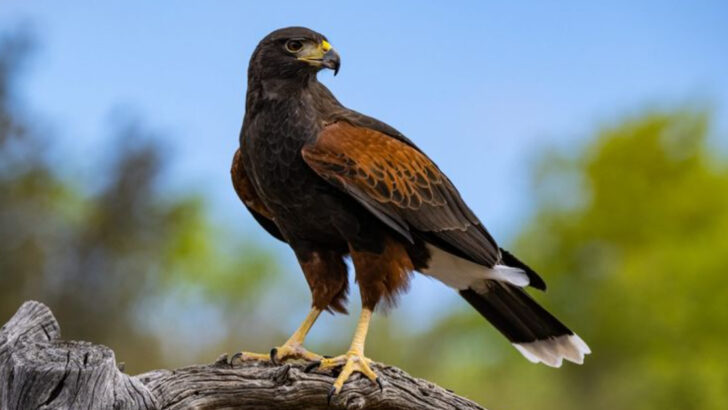Hawks are the sky’s silent hunters—sharp-eyed, swift, and utterly fearless.
From dense forests to open deserts, these raptors rule the air with precision and power. Some can spot a tiny rodent from half a mile away, while others snatch fish straight from the water with deadly accuracy.
But not all hawks are created equal. Some are massive, built for soaring high and diving at breakneck speeds. Others are smaller, agile, and built for weaving through trees like feathered missiles.
Want to see these winged warriors in action? Whether you’re a birdwatcher, nature lover, or just someone who appreciates raw beauty, here are 17 incredible hawks and the best places to witness them in the wild.
Red-tailed Hawk
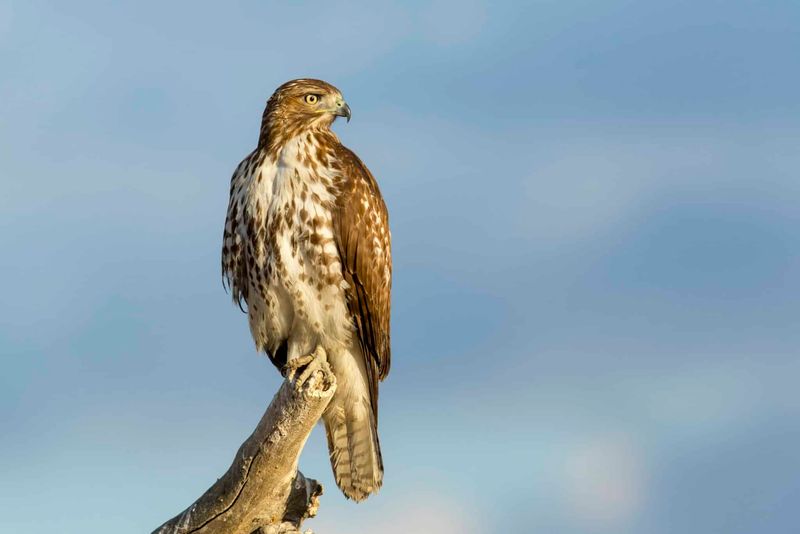
The Red-tailed Hawk is a common sight across North America, often seen perched on telephone poles or soaring high above open fields. Recognizable by its rusty-red tail, this raptor is adaptable to various habitats, including deserts, grasslands, and forests.
One can identify them by their distinctive scream, often used in movies as a generic bird of prey sound. They play a crucial role in controlling rodent populations. To spot these hawks, visit national parks like the Grand Canyon, where they glide effortlessly with their broad wings, a sight truly worth witnessing.
Cooper’s Hawk
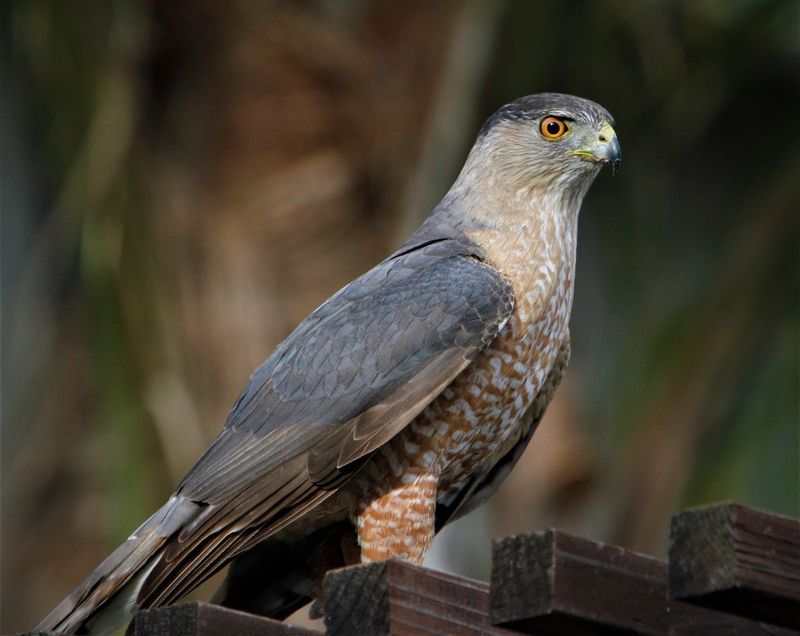
Cooper’s Hawks are agile hunters, often found in wooded areas or suburban neighborhoods where they prey on smaller birds. With their short, rounded wings and long tail, they are masters of maneuvering through dense foliage.
These hawks are identifiable by their steely blue-gray feathers and orange bars on their chest. In urban settings, they adapt well, often seen hidden among trees in backyards. Their presence is a testament to the adaptability of birds of prey in changing environments—a fascinating example of wildlife thriving amidst human development.
Northern Harrier
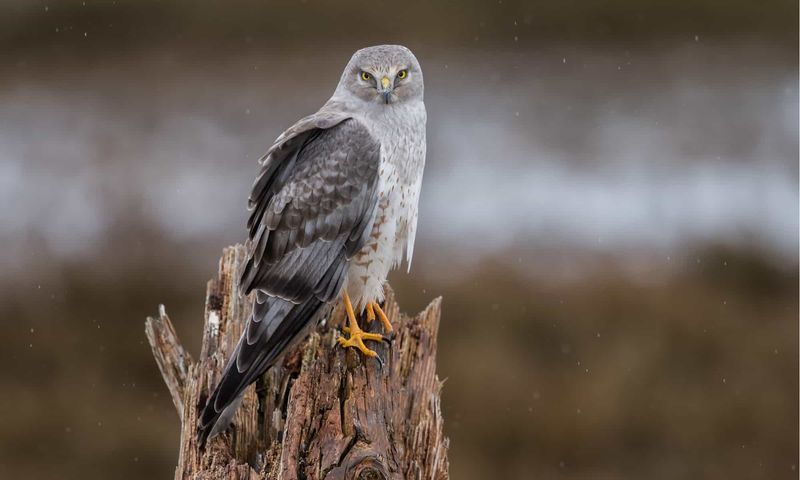
The Northern Harrier is unique among hawks for its owl-like facial disk, which aids in sound detection. These hawks are commonly found in open fields and marshes across North America, hunting by flying low and using their acute hearing.
Easily recognized by their distinctive white rump patch, they are often spotted scanning vast plains. The males are striking in their gray plumage, while females and juveniles sport brown feathers. Observing a Northern Harrier in flight is a graceful experience, showcasing its sharp hunting skills and elegant gliding.
Swainson’s Hawk
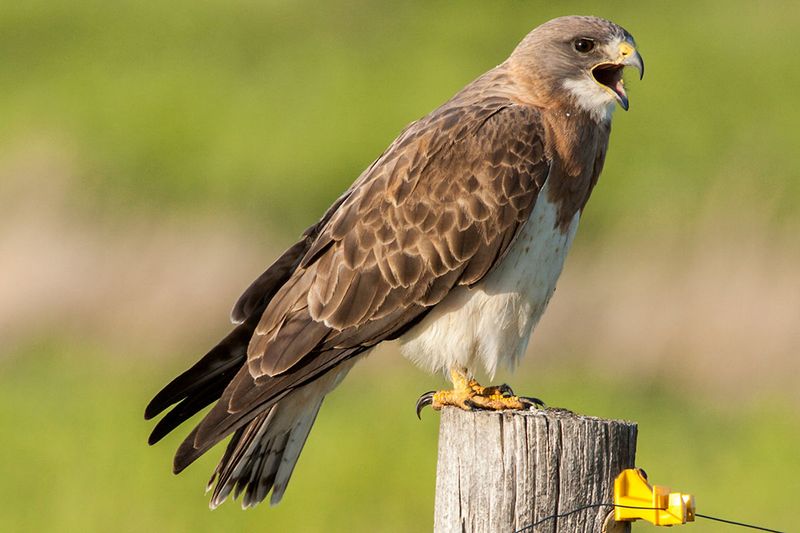
Swainson’s Hawks are renowned for their epic migrations, traveling from North America to Argentina. Found in open prairies and farmlands, these hawks feed primarily on insects, especially grasshoppers.
Their plumage varies widely, but they typically exhibit a dark chest and lighter belly. During migration, they form large ‘kettles’ or groups, a breathtaking spectacle in the sky. To spot these travelers, visit the Great Plains or open agricultural areas where they rest before continuing their journey. Witnessing their migration offers a glimpse into the incredible endurance of these birds.
Rough-legged Hawk
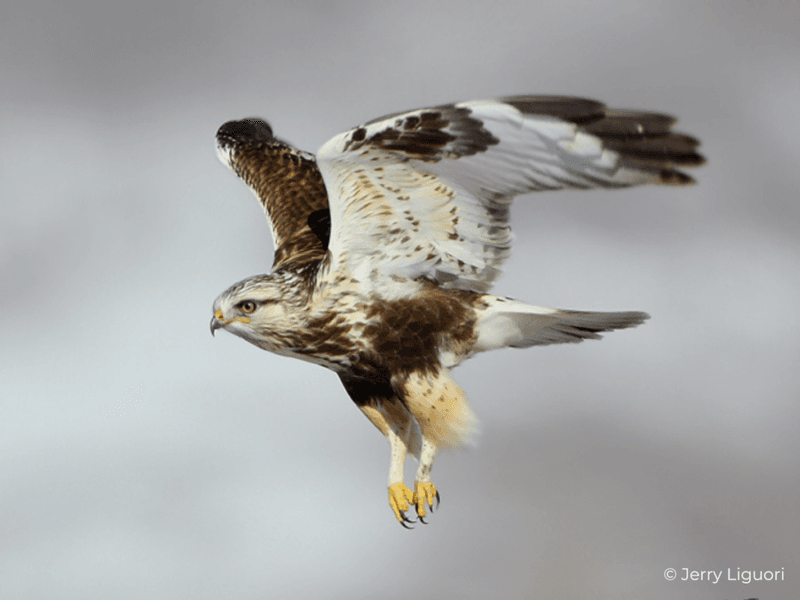
The Rough-legged Hawk is a true bird of the north, breeding in the Arctic tundra and migrating to southern Canada and the northern United States for winter. These hawks are adapted to cold climates, evident in their feathered legs.
They are often seen hovering over open fields, hunting for small mammals. With a light-colored head and dark belly band, they are easily identifiable in flight. Spotting a Rough-legged Hawk in its natural habitat requires a trip to the northern wilderness, where the vast, silent landscapes prove a perfect hunting ground.
Ferruginous Hawk
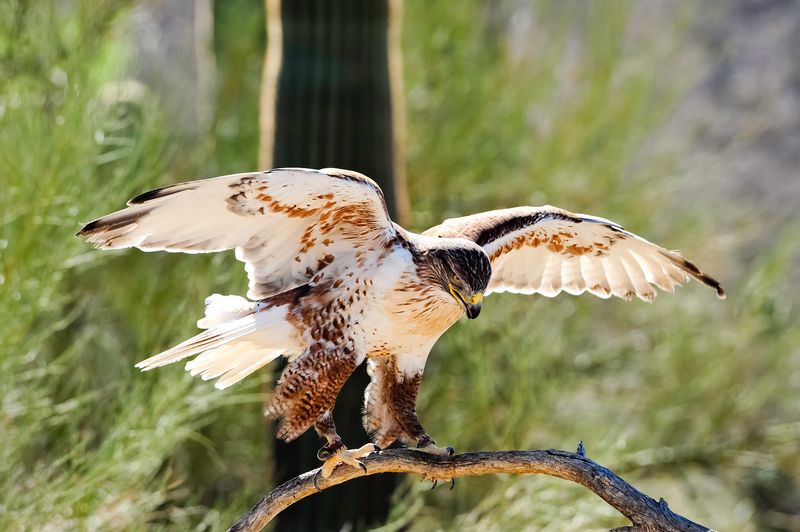
Ferruginous Hawks are the largest of the North American hawks, with broad wings and a robust build. Found in open plains and deserts, they prefer habitats where they can hunt small mammals like prairie dogs.
Their name derives from their rust-colored feathers, particularly on their back and shoulders. Observing a Ferruginous Hawk involves visiting the wide-open spaces of the central and western United States. Their imposing size and striking color make them a favorite among bird watchers and nature photographers, capturing the essence of the wild west.
Harris’s Hawk
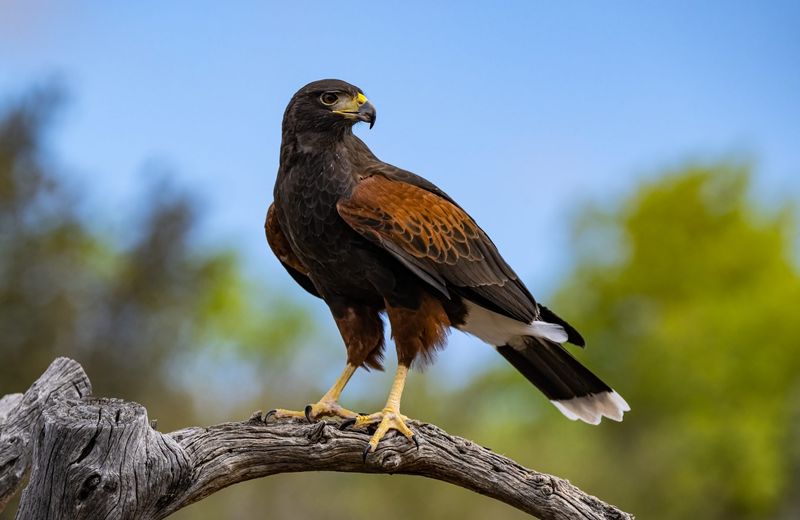
Harris’s Hawks are known for their social nature, often hunting in cooperative groups, unlike most raptors. Found in the arid regions of the southwestern United States and Central America, these hawks are easily identified by their chestnut-colored shoulders and white-tipped tails.
Their group dynamics allow them to hunt larger prey more effectively. Observing these hawks in their natural desert habitat provides insight into their unique social behavior and adaptability. Their presence enriches the biodiversity of desert ecosystems, making them a fascinating subject for wildlife enthusiasts and researchers alike.
Broad-winged Hawk
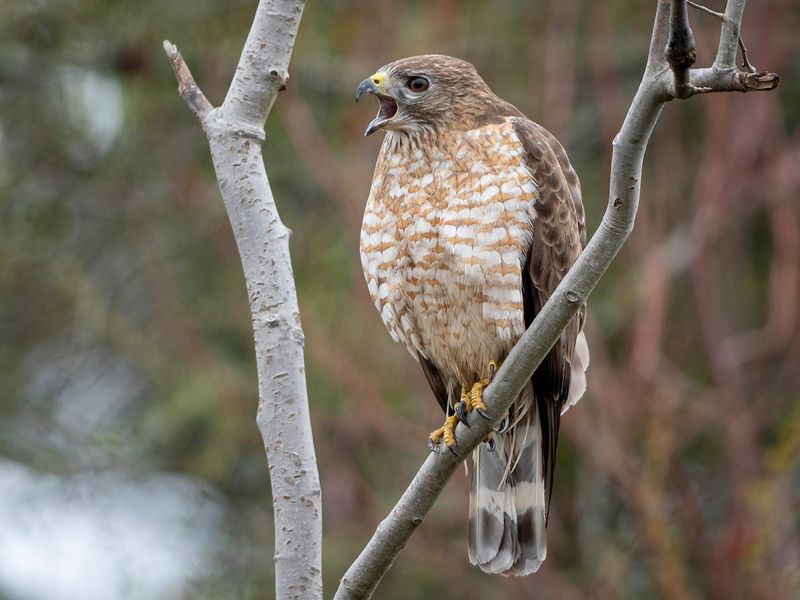
The Broad-winged Hawk is a small but mighty raptor, known for its impressive migratory flocks called ‘kettles.’ Found in forests across eastern North America, they migrate to Central and South America for winter.
Their broad, rounded wings and distinctive whistling call make them easily recognizable. During migration, they can be seen in large numbers, a spectacle for bird watchers. Spotting a Broad-winged Hawk involves visiting forested areas and migration hotspots, where their energy and determination are on full display, exemplifying the incredible journeys undertaken by birds.
Zone-tailed Hawk
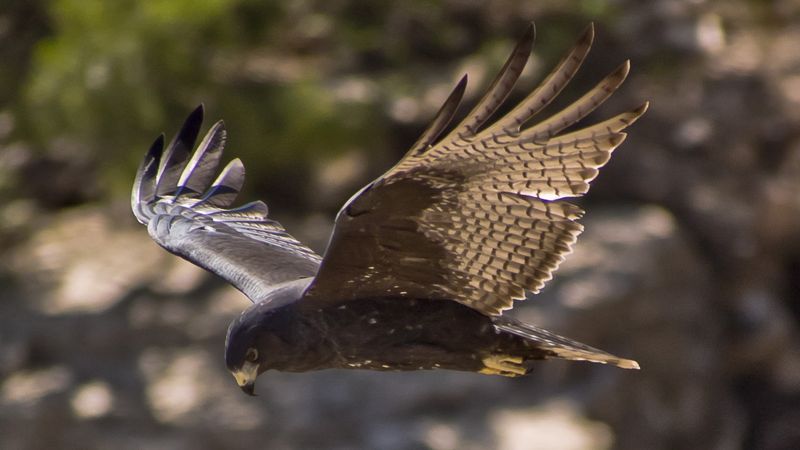
The Zone-tailed Hawk is a master of disguise, often flying among vultures to ambush unsuspecting prey. Found in the southwestern United States and parts of Central America, this hawk is adept at stealthy hunting.
Its plumage is primarily black with white bands on its tail, resembling the Turkey Vulture. This mimicry allows it to surprise prey that might not expect an attack from a hawk. Spotting a Zone-tailed Hawk requires keen observation skills, often in rugged terrains like canyons where they blend seamlessly with their environment.
Gray Hawk
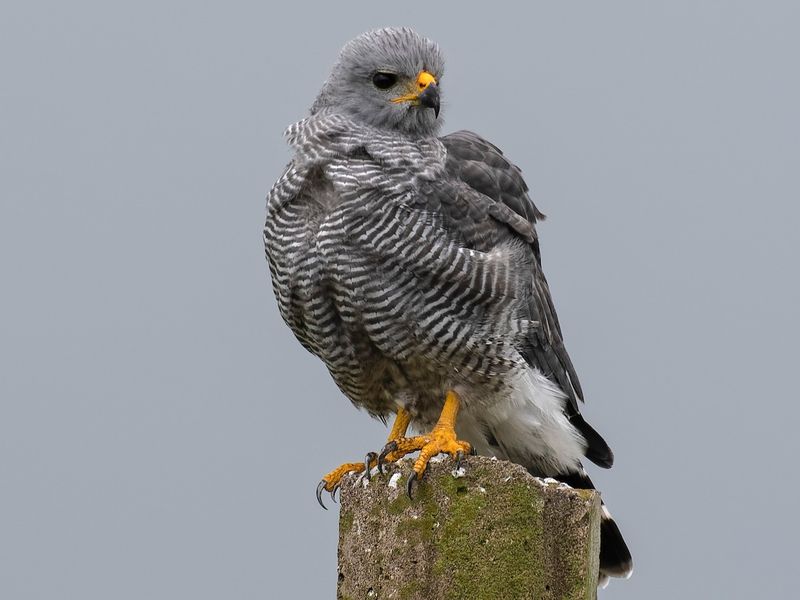
Gray Hawks inhabit subtropical and tropical forests, ranging from the southwestern United States through Central America. These elegant birds are recognized by their pale gray plumage and striking black-and-white banded tail.
They prefer densely wooded areas near water sources, where they hunt for reptiles and small mammals. To observe Gray Hawks, one must venture into the rich, biodiverse regions of their habitat, where their graceful flight and subtle presence add to the serene beauty of the forest. Their song, a series of high-pitched whistles, often reveals their hidden presence.
White-tailed Hawk
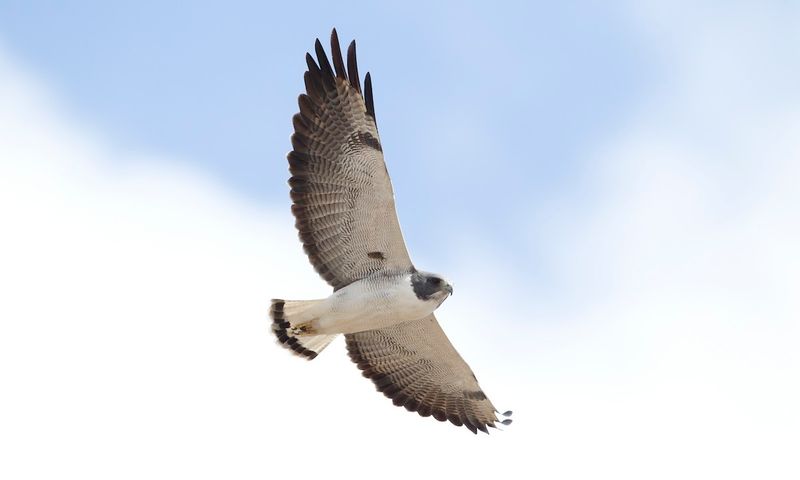
The White-tailed Hawk is a striking bird of prey found in the grasslands and savannas of Texas and Mexico. Easily identified by its bright white tail and wings, this hawk is a powerful hunter of rodents and reptiles.
During flight, the contrast between its dark body and white wings creates a dramatic sight. Observing a White-tailed Hawk in its natural habitat requires visiting open landscapes where they can be seen hovering or perched on high vantage points. Their adaptability to various environments highlights the resilience and diversity of raptor species.
Short-tailed Hawk
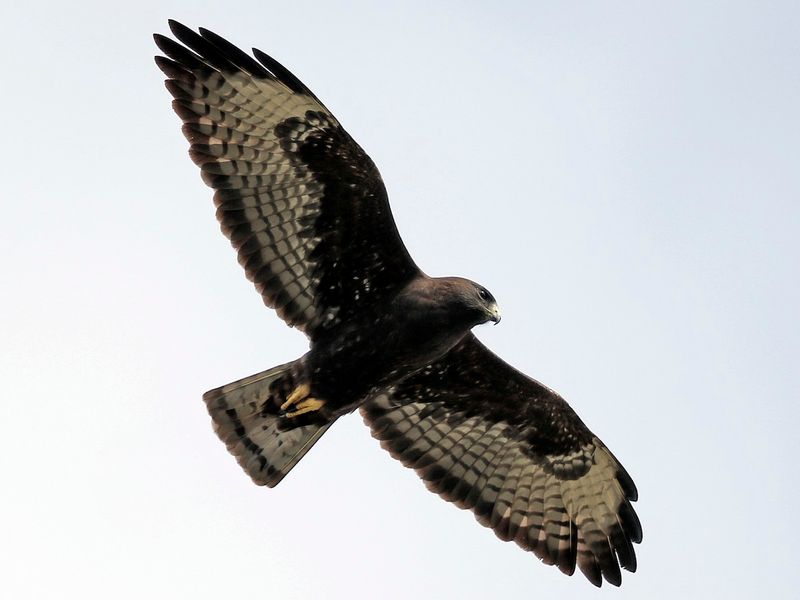
Short-tailed Hawks are small, agile raptors found primarily in Florida and parts of Central America. They are unique for their two color morphs: dark and light. The dark morphs are predominantly chocolate brown, while the light morphs have a white underbelly.
These hawks are adept at hunting birds, often catching prey mid-flight. Spotting a Short-tailed Hawk involves visiting wetlands and forested areas, where their aerial acrobatics and swift maneuvers are a testament to their hunting prowess and adaptability in diverse ecosystems.
Common Black Hawk
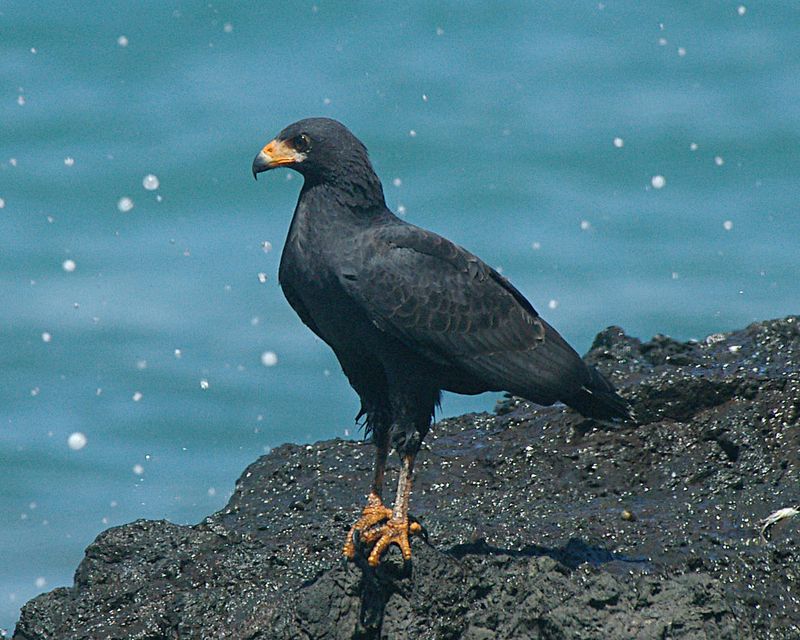
The Common Black Hawk thrives in riparian zones, often near rivers and streams, from the southwestern United States to Central America. With its dark plumage and broad wings, it is adapted to hunting along waterways.
These hawks feed on a diet rich in fish and amphibians, showcasing their versatility in diverse environments. Observing a Common Black Hawk requires exploring riverine forests, where they perch high, scanning the water below for prey. Their presence is a reminder of the intricate connections between species and their habitats, enriching the ecosystem.
Roadside Hawk
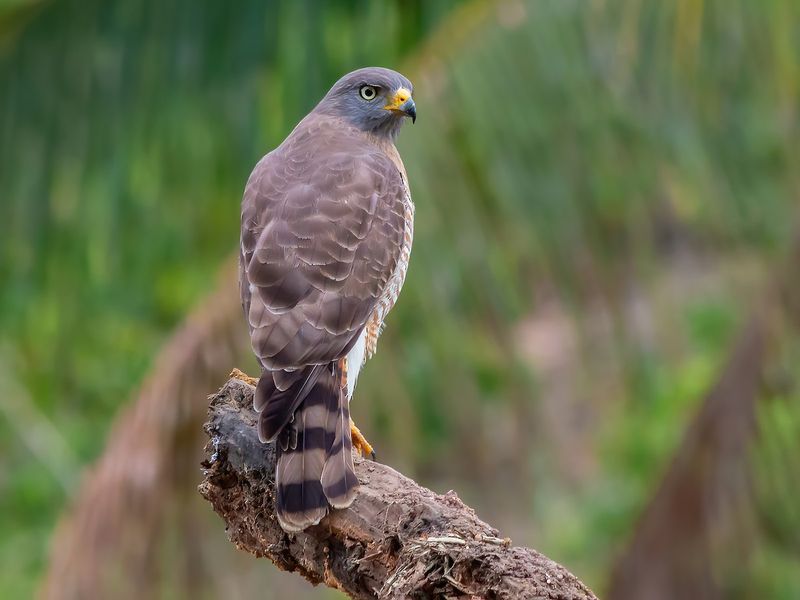
Roadside Hawks are commonly found in Central and South America, often seen perched on roadside posts, hence their name. These small hawks are adaptable, thriving in various environments from forests to savannas.
Their plumage is typically brown with a distinct yellow cere and legs. They are opportunistic hunters, preying on insects, reptiles, and small mammals. To see a Roadside Hawk, travel along rural roads and observe their vigilant watch over their territory. Their presence along roadways highlights their adaptability and the diverse avian life present in tropical regions.
Red-shouldered Hawk
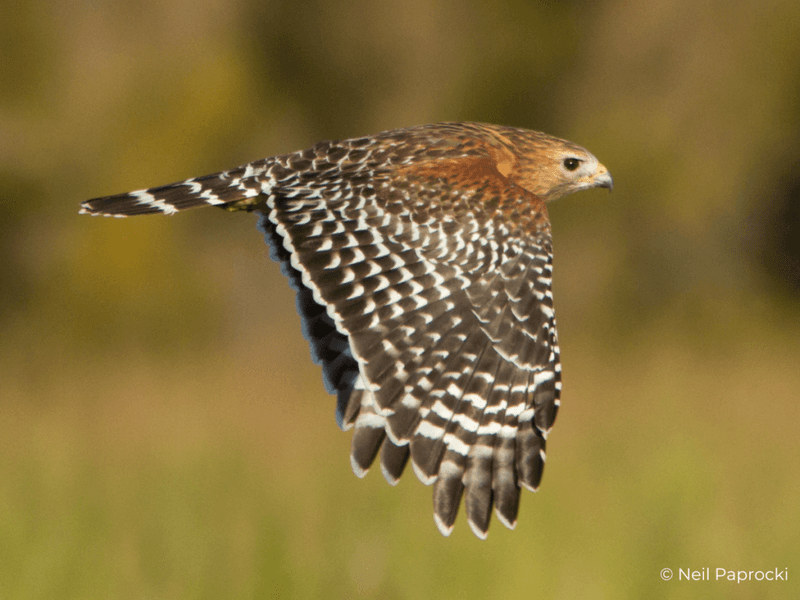
Red-shouldered Hawks are striking raptors found in woodlands and swamps across eastern North America and California. Their name comes from the reddish hue on their shoulders, and they are easily identified by their banded tail.
These hawks are vocal, often heard before seen, with a distinct call that resonates through the forest. Observing them involves visiting forested wetlands, where they hunt for small mammals, amphibians, and reptiles. Their adaptability to different habitats underscores their importance in controlling prey populations and maintaining ecological balance.
Crane Hawk
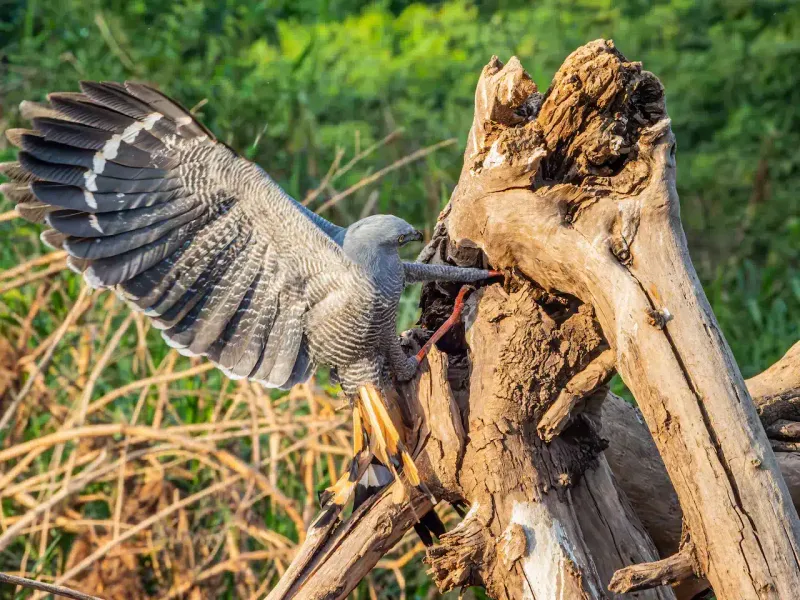
The Crane Hawk is notable for its long legs, which it uses to extract prey from tree cavities. Found in Central and South America, these hawks inhabit subtropical forests and mangroves.
With slate-gray plumage and striking red eyes, they are adept at hunting in dense vegetation. Observing a Crane Hawk requires patience and exploration of their forested habitats, where their unique hunting technique and graceful flight are captivating to watch. Their presence is a testament to the diversity and adaptability of raptors in complex ecosystems.
Black-collared Hawk
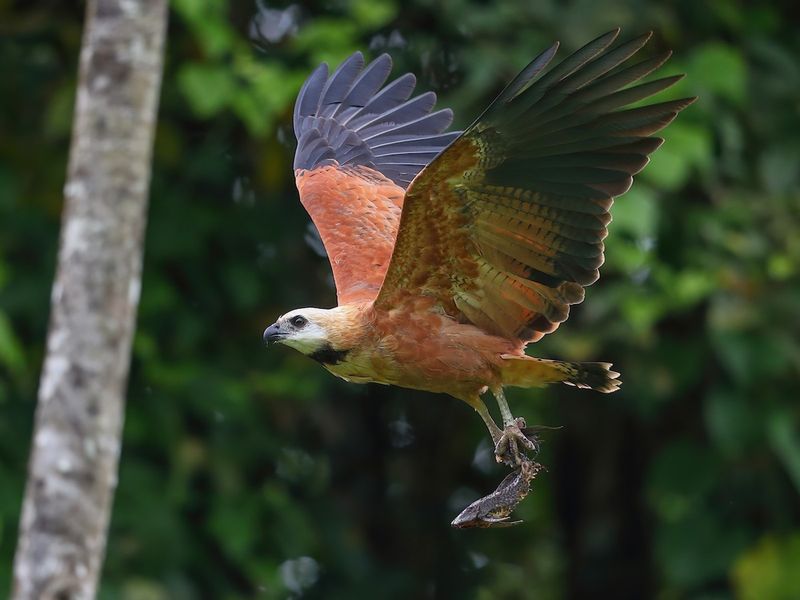
The Black-collared Hawk is a striking bird found in the Amazon Basin, often near water bodies. Known for its reddish-brown plumage and black collar, it feeds predominantly on fish, making it a proficient hunter.
These hawks are usually seen perched over water, ready to dive for their prey. Observing a Black-collared Hawk involves exploring the lush rainforests and waterways of the Amazon, where their presence is integral to the rich biodiversity. Their specialized feeding habits highlight the intricate relationships within their ecosystem, contributing to its health and balance.

